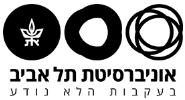סמינר בהתנהגות ארגונית
Dynamics of Exploration and Discovery
מר ליאור נוי, מכון ויצמן למדע
Dynamics of Exploration and Discovery
Exploration and discovery processes are central in the development of art, science and technology. I study the basic principles underlying the dynamics of exploration and discovery by distilling complex human interactions into simple experimental settings. This reduction allows for a computational analysis of behavior and a modeling of its dynamics.
I will begin by presenting an experimental paradigm for studying joint improvisation – the ability of performers to discover new patterns through interaction. I developed a simple experimental framework to capture the essence of joint improvisation. This paradigm is based on the mirror game - a common theatrical exercise in which actors create synchronized motion together. The mirror game paradigm enabled the discovery of a basic mechanism of joint improvisation: the ability of expert pairs to share leadership by mutually predicting each other’s actions (Noy et al., PNAS 2011).
I will then describe a new paradigm for measuring human creative exploration in a bounded visual space. Participants explore the space of 10-connected cubes, searching for shapes they find beautiful and interesting. I quantify and mathematically model a general search dynamic: exploration phases are punctuated by a creative leap leading to exploitation phases of similar shapes, terminated by ‘moving on’ and a return to exploration.
As I will show, the goal of my research is a scientific understanding of the principles of the human exploration and discovery processes, leading to possible interventions and technologies for improving human interaction and creativity.
Exploration and discovery processes are central in the development of art, science and technology. I study the basic principles underlying the dynamics of exploration and discovery by distilling complex human interactions into simple experimental settings. This reduction allows for a computational analysis of behavior and a modeling of its dynamics.
I will begin by presenting an experimental paradigm for studying joint improvisation – the ability of performers to discover new patterns through interaction. I developed a simple experimental framework to capture the essence of joint improvisation. This paradigm is based on the mirror game - a common theatrical exercise in which actors create synchronized motion together. The mirror game paradigm enabled the discovery of a basic mechanism of joint improvisation: the ability of expert pairs to share leadership by mutually predicting each other’s actions (Noy et al., PNAS 2011).
I will then describe a new paradigm for measuring human creative exploration in a bounded visual space. Participants explore the space of 10-connected cubes, searching for shapes they find beautiful and interesting. I quantify and mathematically model a general search dynamic: exploration phases are punctuated by a creative leap leading to exploitation phases of similar shapes, terminated by ‘moving on’ and a return to exploration.
As I will show, the goal of my research is a scientific understanding of the principles of the human exploration and discovery processes, leading to possible interventions and technologies for improving human interaction and creativity.

